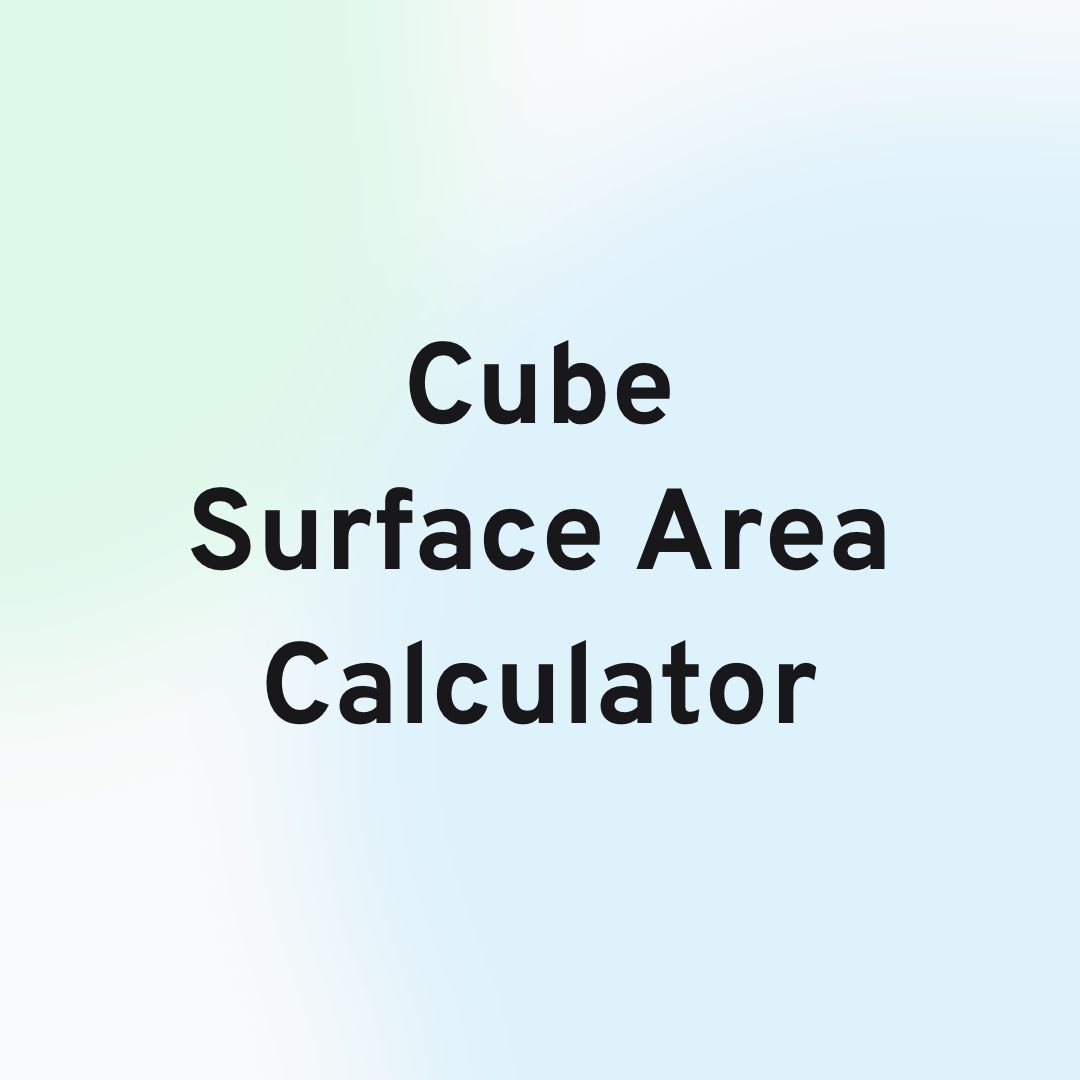
Mathematics
Geometry
Cube Surface Area Calculator
Quickly calculate the cube's lateral and total surface area using our nifty Cube Surface Area Calculator! Input the Side length to find out!
Welcome to our Prism Surface Area Calculator, which will help you calculate the surface area for different types of Prisms. A prism is a solid three-dimensional shape with polygons as bases on either end of the prism. The bases are congruent and parallel to each other. The bases are connected by the prism’s lateral faces.
There are different types of prisms, classified based on the shape of their bases.
The lateral surface area of the prism is the sum of the areas of all the lateral faces. The total surface area of the prism is the sum of the lateral surface area and the areas of both bases.
Using the Prism Surface Area calculator, you can calculate the prism’s lateral surface area and total surface area by inputting the values of the required variables for the specific type of Prism.
You can calculate the lateral surface area and the total surface area of the triangular prism by inputting the required value for the calculation.
The variables in the calculator include
First Edge Length (S1) Length of the 1st side of the Triangular Base.
Second Edge Length (S2) Length of the 2nd side of the Triangular Base.
Third Edge Length (S3) Length of the 3rd side of the Triangular Base.
Length (l) The length of the Prism.
Base (b) The length of the bottom edge of the triangular base.
Height (h) The height of the triangular base.
Lateral Surface Area (LSA) The lateral surface area is the area of the lateral faces of the Prism.
Total Surface Area (TSA) The total surface area of the Prism is the sum of the lateral surface area and the area of the two bases.
You can calculate the lateral surface area and the total surface area of the Square prism by inputting the required value for the calculation.
The variables in the calculator include
Side (a) The length of one of the sides of the Square Base.
Height (h) The height of the prism.
Lateral Surface Area (LSA) The lateral surface area is the area of the lateral faces of the Prism.
Total Surface Area (TSA) The total surface area of the Prism is the sum of the lateral surface area and the area of the two bases.
You can calculate the lateral surface area and the total surface area of the Rectangular prism by inputting the required value for the calculation.
The variables in the calculator include
Length (l) The length of the Rectangular Base.
Breadth (b) The breadth of the Rectangular Base.
Height (h) The height of the prism.
Lateral Surface Area (LSA) The lateral surface area is the area of the lateral faces of the Prism.
Total Surface Area (TSA) The total surface area of the Prism is the sum of the lateral surface area and the area of the two bases.
You can calculate the lateral surface area and the total surface area of the Pentagonal prism by inputting the required value for the calculation.
The variables in the calculator include
Base Length (a) The length of the side of the Pentagonal base.
Height (h) The height of the prism.
Lateral Surface Area (LSA) The lateral surface area is the area of the lateral faces of the Prism.
Total Surface Area (TSA) The total surface area of the Prism is the sum of the lateral surface area and the area of the two bases.
You can calculate the lateral surface area and the total surface area of the hexagonal prism by inputting the required value for the calculation.
The variables in the calculator include
Base Length (a) The length of the side of the Hexagonal base.
Height (h) The height of the prism.
Lateral Surface Area (LSA) The lateral surface area is the area of the lateral faces of the Prism.
Total Surface Area (TSA) The total surface area of the Prism is the sum of the lateral surface area and the area of the two bases.
You can calculate the lateral surface area and the total surface area of the Octagonal prism by inputting the required value for the calculation.
The variables in the calculator include
Base Length (a) The length of the side of the Octagonal base.
Height (h) The height of the prism.
Lateral Surface Area (LSA) The lateral surface area is the area of the lateral faces of the Prism.
Total Surface Area (TSA) The total surface area of the Prism is the sum of the lateral surface area and the area of the two bases.
A Prism is a solid three-dimensional shape with identical polygons as bases at both ends of the Prism. The bases are congruent and parallel to each other, and they are connected by the lateral faces of the prism.
Type of Polygon of the Base
Prisms can be classified based on the type of polygon of the base.
The shape of the Base
Prisms can also be classified based on the shape of the base.
Alignment of the base
Prisms are also classified based on the alignment of the lateral faces with the base.
Lateral Surface Area (LSA)
The lateral surface area is the area of the prism without including the area of the bases. The lateral surface area for a prism is based of the following formula
Total Surface Area (TSA)
The total surface area of the Prism is the sum of the lateral surface area and the area of the two bases. The total surface area for a prism is based of the following formula
We calculate the lateral surface area of the triangular prism using the following formula
Where,
S1 = Length of 1st side of Triangular Base
S2 = Length of 2nd side of Triangular Base
S3 = Length of 3rd side of Triangular Base
l = height/length of the Prism
We calculate the total surface area of the triangular prism using the following formula.
Where,
S1 = Length of 1st side of Triangular Base
S2 = Length of 2nd side of Triangular Base
S3 = Length of 3rd side of Triangular Base
l = height/length of the Prism
b = Length of Triangular Base, it could be any of the Sides S1, S2, or S3.
h = height of a triangle with respect to chosen side b.
We calculate the lateral surface area of the square prism using the following formula
Where,
a = Length of the Side of Square
h = height of the Prism
We calculate the total surface area of the square prism using the following formula.
Where,
a = Length of the Side of Square
h = height of the Prism
We calculate the lateral surface area of the rectangular prism using the following formula
Where,
l = Length of the rectangular base
b = breadth of the rectangular base
h = height of the prism
We calculate the total surface area of the rectangular prism using the following formula.
Where,
l = Length of the rectangular base
b = breadth of the rectangular base
h = height of the prism
We calculate the lateral surface area of the pentagonal prism using the following formula
Where,
b = Length of the side of the Pentagon
h = height of the prism
We calculate the total surface area of the pentagonal prism using the following formula.
Where,
b = Length of the side of the Pentagon
h = height of the prism
We calculate the lateral surface area of the hexagonal prism using the following formula
Where,
b = Length of the side of the hexagon
h = height of the prism
We calculate the total surface area of the hexagonal prism using the following formula.
Where,
b = Length of the side of the hexagon
h = height of the prism
We calculate the lateral surface area of the octagonal prism using the following formula
Where,
b = Length of the side of the octagon
h = height of the prism
We calculate the total surface area of the octagonal prism using the following formula.
Where,
b = Length of the side of the octagon
h = height of the prism
Given a rectangular prism with a base length of 6 cm, a width of 5 cm, and a prism length of 7 cm. What is the lateral and total surface area of the prism?
We calculate the lateral surface area of the rectangular prism using the following formula
We calculate the total surface area of the rectangular prism using the following formula.

Mathematics
Geometry
Quickly calculate the cube's lateral and total surface area using our nifty Cube Surface Area Calculator! Input the Side length to find out!
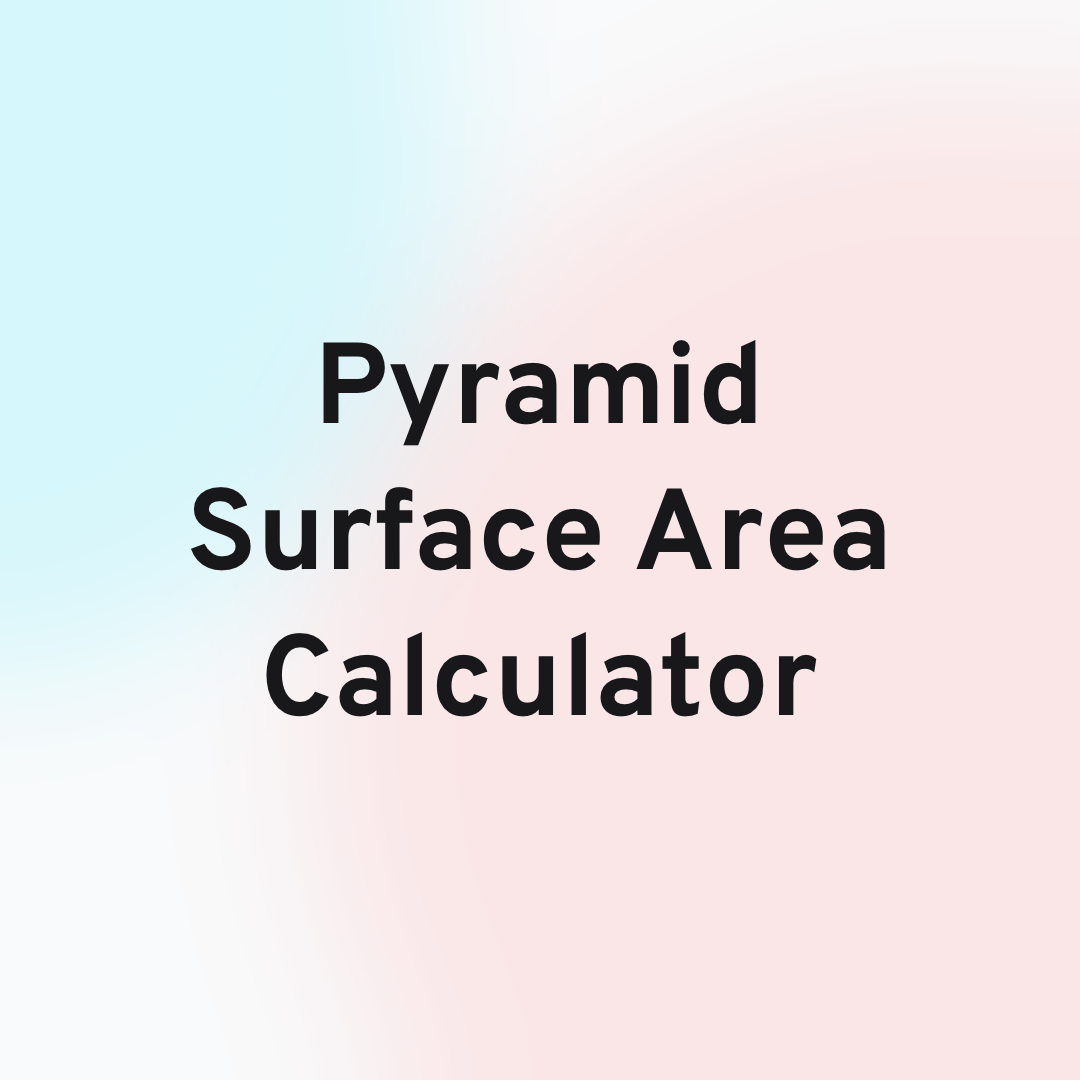
Mathematics
Geometry
Calculate the surface area of the Triangular pyramid, Square Pyramid, Pentagonal Pyramid with ease using our Pyramid Surface Area calculator!
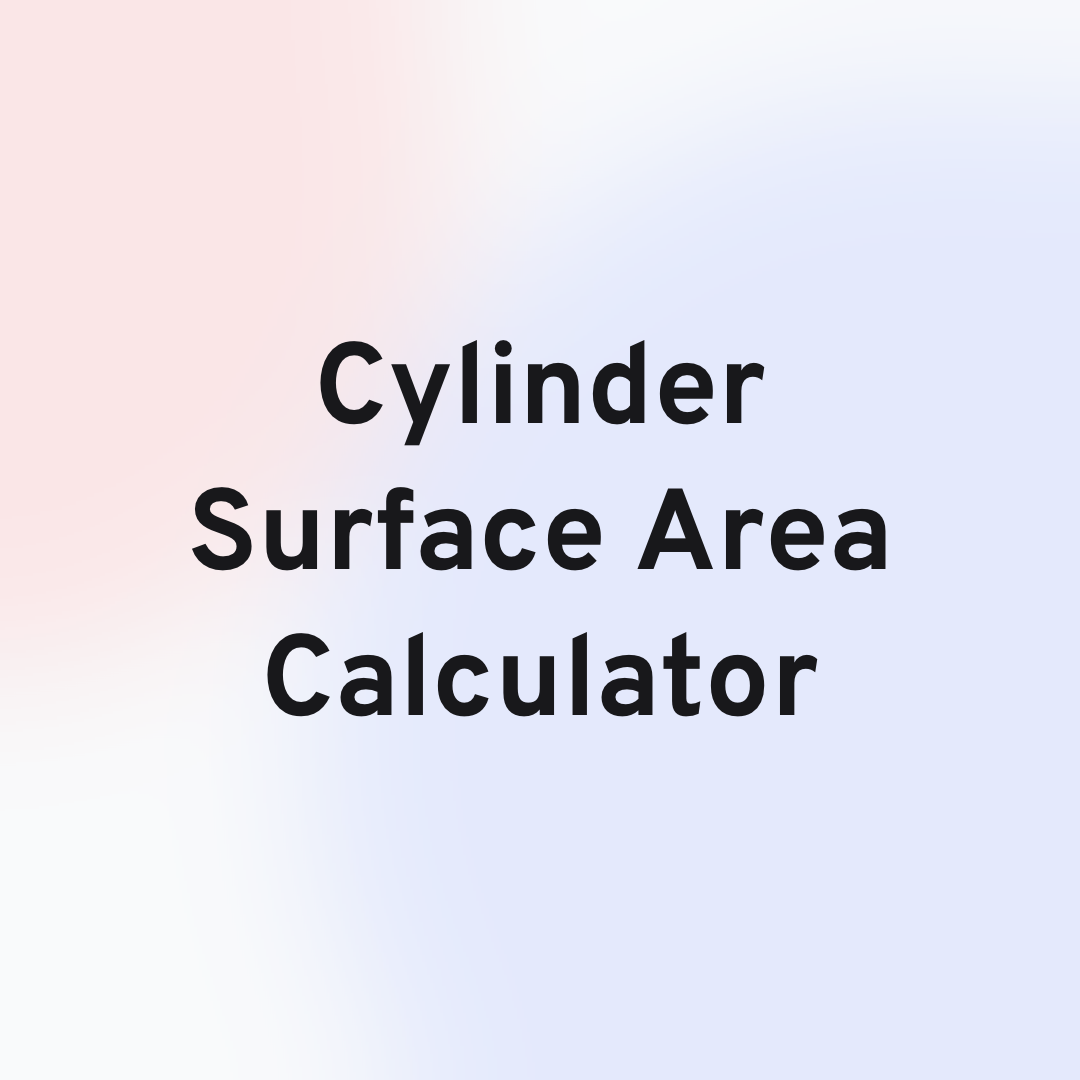
Mathematics
Geometry
Calculate the lateral surface area and total surface area of the cylinder with ease using our nifty Cylinder Surface Area Calculator!
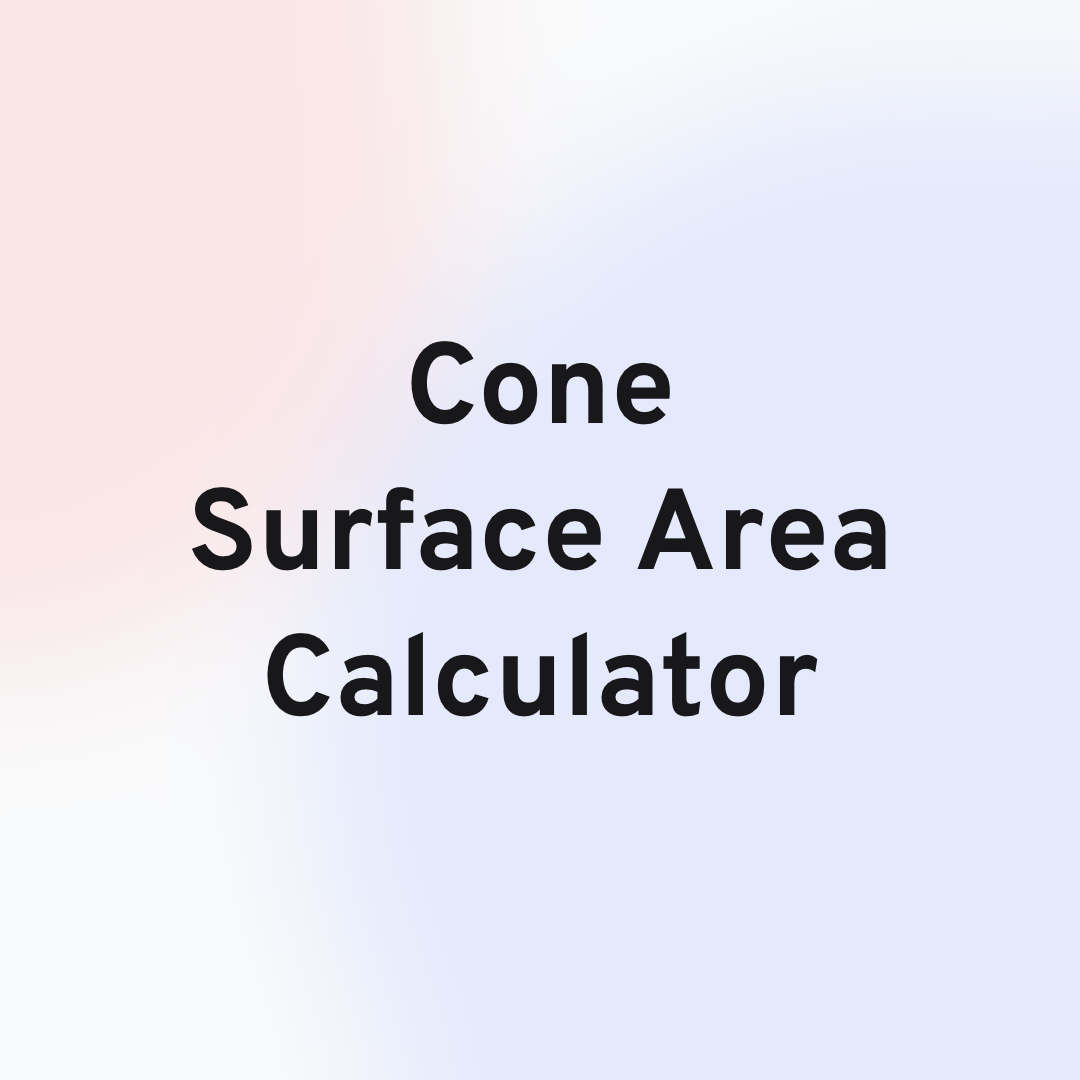
Mathematics
Geometry
Calculate the lateral and total surface area of the Cone with ease using our nifty Cone Surface Area Calculator!
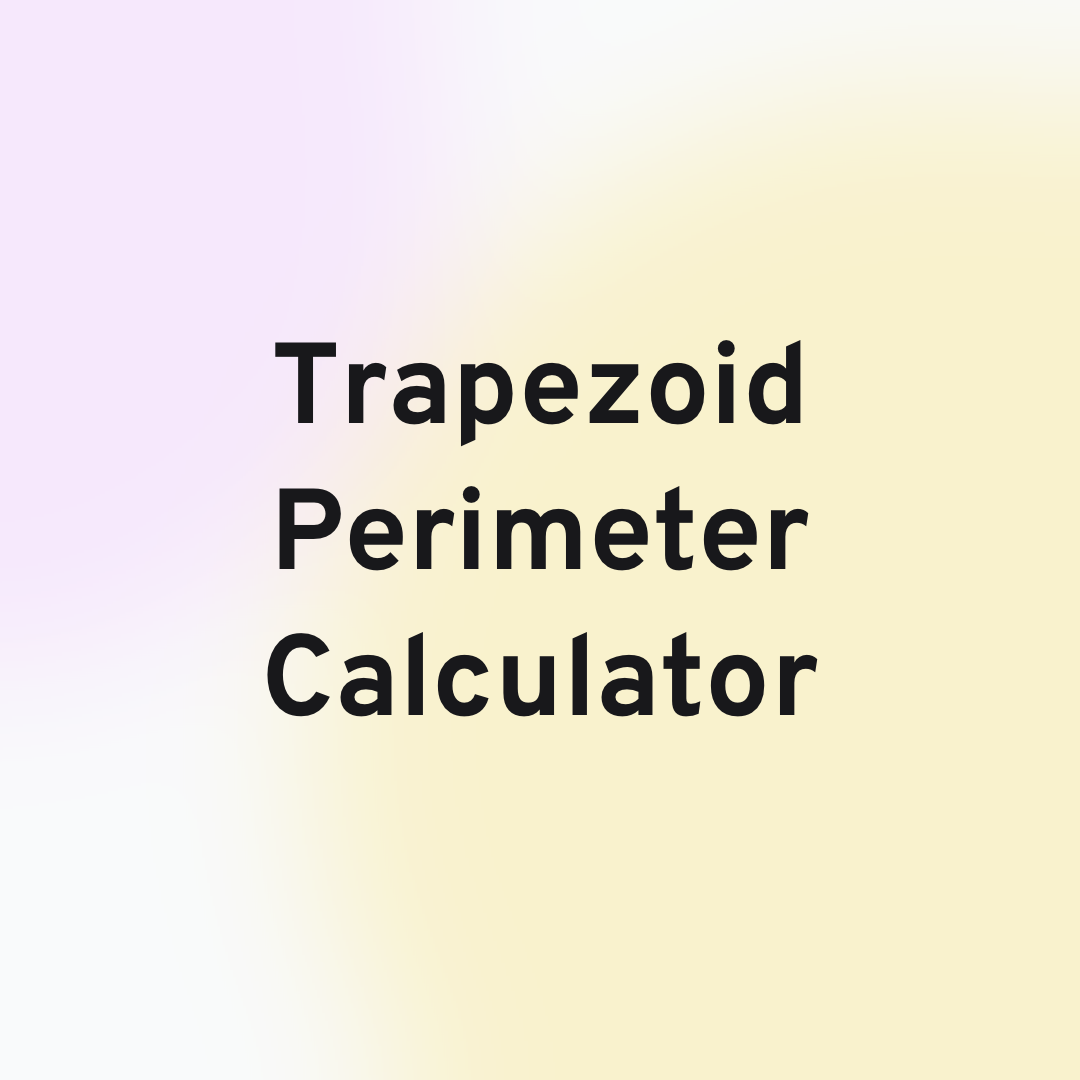
Mathematics
Geometry
Quickly calculate the perimeter of the trapezoid using our nifty Trapezoid Perimeter Calculator! Try it out now!

Mathematics
Geometry
Quickly calculate the Lateral and Total Surface of the Cuboid using our nifty Cuboid Surface Area Calculator!.